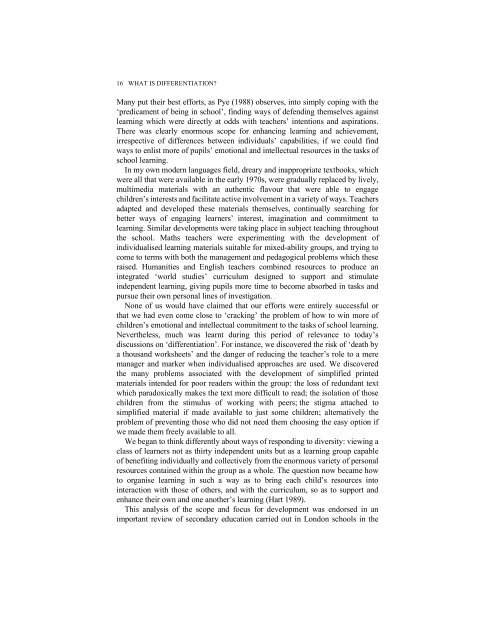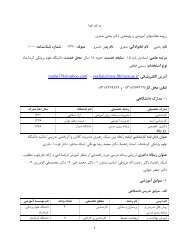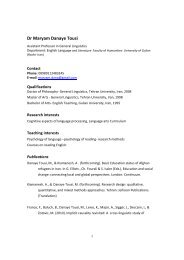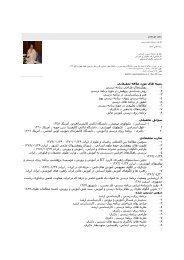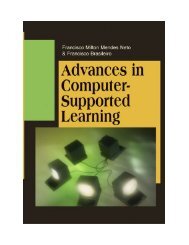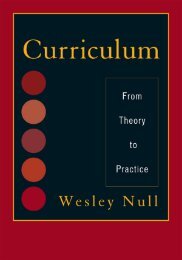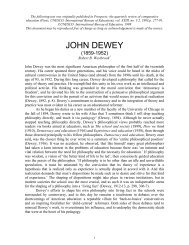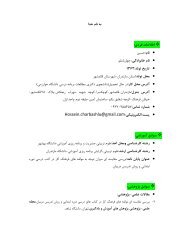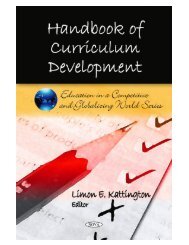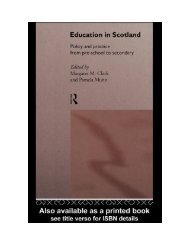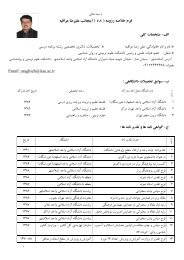Edited by
Edited by
Edited by
Create successful ePaper yourself
Turn your PDF publications into a flip-book with our unique Google optimized e-Paper software.
16 WHAT IS DIFFERENTIATION?Many put their best efforts, as Pye (1988) observes, into simply coping with thepredicament of being in school, finding ways of defending themselves againstlearning which were directly at odds with teachers intentions and aspirations.There was clearly enormous scope for enhancing learning and achievement,irrespective of differences between individuals capabilities, if we could findways to enlist more of pupils emotional and intellectual resources in the tasks ofschool learning.In my own modern languages field, dreary and inappropriate textbooks, whichwere all that were available in the early 1970s, were gradually replaced <strong>by</strong> lively,multimedia materials with an authentic flavour that were able to engagechildrens interests and facilitate active involvement in a variety of ways. Teachersadapted and developed these materials themselves, continually searching forbetter ways of engaging learners interest, imagination and commitment tolearning. Similar developments were taking place in subject teaching throughoutthe school. Maths teachers were experimenting with the development ofindividualised learning materials suitable for mixed-ability groups, and trying tocome to terms with both the management and pedagogical problems which theseraised. Humanities and English teachers combined resources to produce anintegrated world studies curriculum designed to support and stimulateindependent learning, giving pupils more time to become absorbed in tasks andpursue their own personal lines of investigation.None of us would have claimed that our efforts were entirely successful orthat we had even come close to cracking the problem of how to win more ofchildrens emotional and intellectual commitment to the tasks of school learning.Nevertheless, much was learnt during this period of relevance to todaysdiscussions on differentiation. For instance, we discovered the risk of death <strong>by</strong>a thousand worksheets and the danger of reducing the teachers role to a meremanager and marker when individualised approaches are used. We discoveredthe many problems associated with the development of simplified printedmaterials intended for poor readers within the group: the loss of redundant textwhich paradoxically makes the text more difficult to read; the isolation of thosechildren from the stimulus of working with peers; the stigma attached tosimplified material if made available to just some children; alternatively theproblem of preventing those who did not need them choosing the easy option ifwe made them freely available to all.We began to think differently about ways of responding to diversity: viewing aclass of learners not as thirty independent units but as a learning group capableof benefiting individually and collectively from the enormous variety of personalresources contained within the group as a whole. The question now became howto organise learning in such a way as to bring each childs resources intointeraction with those of others, and with the curriculum, so as to support andenhance their own and one anothers learning (Hart 1989).This analysis of the scope and focus for development was endorsed in animportant review of secondary education carried out in London schools in the


